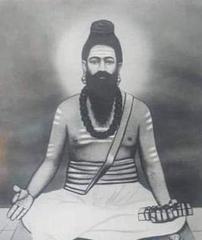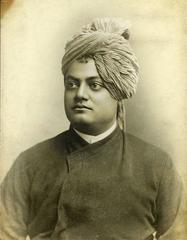
Comprehensive Guide to Visiting Kanyakumari, Kanyakumari District, India
Date: 13/08/2024
Captivating Introduction
Welcome to Kanyakumari, the southernmost tip of India where the Arabian Sea, the Indian Ocean, and the Bay of Bengal converge in a spectacular dance of the elements. Imagine standing at the edge of the land, feeling the salty breeze on your face, and witnessing a sunrise and sunset that defy imagination. This is Kanyakumari, a place where spirituality, history, and natural beauty blend seamlessly into an unforgettable experience. Named after the eternally youthful Hindu goddess Devi Kanya Kumari, the town is steeped in mythology and history. According to legends, Devi Kanya Kumari, an incarnation of Parvati, performed penance here to win Lord Shiva’s heart, lending the town its mystical allure and making it a pilgrimage hotspot (exeideas.com).
Kanyakumari’s history reads like an epic novel. From the ancient Sangam period to the medieval era, this coastal gem has been a melting pot of cultures. Early travelers like Ptolemy and Marco Polo couldn’t resist its allure. Mighty dynasties like the Cholas, Pandyas, and Nayaks ruled this land, leaving behind architectural treasures that stand testament to its vibrant past (Wikipedia). The town’s strategic location along the ancient spice route attracted traders, explorers, and missionaries, including the Portuguese and the British, whose colonial-era buildings and churches still stand today (Holiday Landmark).
But Kanyakumari is not just about history and architecture. It’s a place where you can witness the rare phenomenon of the sun setting and the moon rising simultaneously on full moon days. The town’s unique location symbolizes unity in diversity, celebrated through festivals and rituals that draw visitors from all over. The Triveni Sangam, where the three seas meet, offers a spiritual experience that is hard to describe in words (Holidify). So, are you ready to uncover the secrets of Kanyakumari?
Download the Audiala app and let it guide you through this mesmerizing journey, unlocking stories and experiences you won’t find in any guidebook.
Table of Contents
- Historical and Religious Significance of Kanyakumari
- Major Attractions in Kanyakumari
- Hidden Gems and Local Secrets
- Local Customs and Etiquette
- Interactive Elements
- Practical Information
- Sample Itinerary
Historical and Religious Significance of Kanyakumari
Mythological Origins and Etymology
Welcome to Kanyakumari, often hailed as the ‘Land’s End of India’. Named after the eternally youthful Hindu goddess Devi Kanya Kumari, this town is steeped in legends. According to Hindu mythology, Devi Kanya Kumari, an incarnation of Parvati, performed penance here to win Lord Shiva’s heart. The name ‘Kanyakumari’ translates to ‘Virgin Princess,’ highlighting the goddess’s everlasting purity. This mystical tale makes Kanyakumari a pilgrimage hotspot, pulling in devotees from all corners of the globe (exeideas.com).
Ancient and Medieval History
Kanyakumari’s history reads like an epic novel, rich with battles, conquests, and cultural exchanges. From the ancient Sangam period to the medieval era, this coastal gem has been a melting pot of cultures. Early travelers like Ptolemy and Marco Polo couldn’t resist its allure. Over the centuries, mighty dynasties like the Cholas, Pandyas, and Nayaks ruled this land, leaving behind architectural treasures that stand testament to its vibrant past. Temples, monuments, and other relics from these eras form a mosaic of history (Wikipedia).
Architectural Marvels and Temples
Kumari Amman Temple
The Kumari Amman Temple, dedicated to Devi Kanya Kumari, isn’t just a place of worship—it’s an architectural marvel. Perched on the coast, this temple dazzles with intricate carvings and towering gopurams (gateway towers). During the Navratri festival, the temple becomes a hive of activity, with pilgrims thronging to seek the goddess’s blessings (Holidify).
Suchindram Temple
The Suchindram Temple, also known as the Thanumalayan Temple, is a unique blend of Dravidian and Kerala architectural styles. Dedicated to the Trimurti—Brahma, Vishnu, and Shiva—this temple features a 134-foot tall gopuram and sculptures dating back to the 9th century. Don’t miss the musical pillars and the towering 18-foot Hanuman statue (Holidify).
Colonial Influence and Maritime Heritage
Kanyakumari’s strategic location along the ancient spice route has made it a hotspot for traders, explorers, and missionaries. The Portuguese and the British left their marks, evident in the town’s colonial-era buildings and churches. The Our Lady of Ransom Church, built in Gothic style, is a stunning example (Holiday Landmark).
Memorials and Monuments
Vivekananda Rock Memorial
Swami Vivekananda attained enlightenment on a rock, and in his honor, the Vivekananda Rock Memorial was built in 1970. Situated on a small island off the coast, the memorial combines traditional Indian and modern architectural styles. It offers panoramic ocean views and serves as a place for meditation and reflection (Holidify).
Thiruvalluvar Statue
Right next to the Vivekananda Rock Memorial stands the colossal Thiruvalluvar Statue, dedicated to the legendary Tamil poet and philosopher Thiruvalluvar. At 133 feet, this statue symbolizes steadfastness and virtue, key themes in Thiruvalluvar’s work, the Thirukkural. Its grandeur makes it a landmark you can’t miss (Wikipedia).
Cultural and Spiritual Significance
Kanyakumari is more than just a scenic spot; it’s a cultural and spiritual mosaic. The town’s unique location at the confluence of the Arabian Sea, the Indian Ocean, and the Bay of Bengal symbolizes unity in diversity. This confluence is celebrated through festivals and rituals that draw visitors from all over.
Festivals and Rituals
Navratri is a big deal in Kanyakumari. The Kumari Amman Temple comes alive with elaborate rituals, processions, and cultural performances. Another significant event is the Chaitra Purnima in April, featuring a special ritual bath at the Triveni Sangam, where the three seas meet (Holiday Landmark).
Natural Attractions with Spiritual Overtones
Triveni Sangam
The Triveni Sangam is where the magic happens—the Arabian Sea, the Indian Ocean, and the Bay of Bengal meet. This confluence is considered highly auspicious, and a dip in these waters is believed to purify the soul. The site is also famous for its spellbinding sunrises and sunsets (Holidify).
Sunset and Sunrise Points
Imagine watching both the sunrise and sunset over the ocean from the same spot. The Sunset View Point and the View Tower are perfect for this celestial show. On full moon days, you can witness the rare phenomenon of the sun setting and the moon rising simultaneously (Wikipedia).
Major Attractions in Kanyakumari
Vivekananda Rock Memorial
The Vivekananda Rock Memorial stands as a tribute to Swami Vivekananda, who meditated on this rock in 1892. Hop on a ferry and let the waves guide you to this iconic landmark. Breathe in the salty air and take in panoramic views of the confluence of the Arabian Sea, the Indian Ocean, and the Bay of Bengal. It’s a serene spot for reflection.
Thiruvalluvar Statue
Standing a whopping 133 feet tall, the Thiruvalluvar Statue is a towering symbol of Tamil culture. Take the ferry to this adjacent rock and climb up to the statue’s feet. Feel the wind in your hair and the weight of history in your heart.
Kanyakumari Beach
Imagine walking on sand that’s a riot of colors, with the sound of waves crashing against the shore. That’s Kanyakumari Beach for you. Famous for its sunrise and sunset views, this beach is a sensory delight.
Bhagavathy Amman Temple
The Bhagavathy Amman Temple is dedicated to the virgin goddess Kanya Kumari. Feel the spiritual energy as you walk through its halls, and don’t forget to take that holy dip by the shore.
Padmanabhapuram Palace
Step into a time machine and visit the Padmanabhapuram Palace, about an hour northwest of Kanyakumari. This 1600-era palace is the largest wooden palace in Asia and boasts intricate woodwork that will leave you in awe.
Vattakottai Fort
Just 15 minutes from Kanyakumari lies the 18th-century Vattakottai Fort. Built by the Venad kings of Travancore, this coastal military base offers fantastic views of the Bay of Bengal and the Western Ghats.
Gandhi Memorial Mandapam
The Gandhi Memorial Mandapam is designed to ensure that the first rays of the sun fall on the exact spot where Gandhi’s ashes were kept. Feel the history and pay your respects in this serene space.
Tsunami Monument
The Tsunami Monument stands as a poignant reminder of the 2004 tragedy. It’s a place to reflect on the resilience of Kanyakumari’s people and the impact of natural disasters.
Triveni Sangam
The Triveni Sangam is where the Arabian Sea, the Indian Ocean, and the Bay of Bengal meet. Many believe it’s a purifying experience. Capture stunning views and feel the unique energy of this geographical marvel.
Our Lady of Ransom Church
The Our Lady of Ransom Church is a Gothic architectural gem dedicated to Mother Mary. With its white facade and towering spires, it’s a serene spot for reflection and a significant religious site for the local Christian community.
Mathur Hanging Bridge
The Mathur Hanging Bridge offers scenic views of lush greenery and flowing rivers. It’s an architectural marvel that showcases the region’s engineering prowess.
Sanguthurai Beach
For a quieter beach experience, head to Sanguthurai Beach. Known for its calm waters and stunning views, this beach is perfect for a peaceful picnic or a serene evening walk.
Courtallam Falls
Located about 120 kilometers from Kanyakumari, Courtallam Falls is dubbed the ‘Spa of South India.’ Enjoy the natural massage of cascading water and the lush greenery that surrounds this picturesque spot.
Hidden Gems and Local Secrets
Sunset Point at Chitharal Hills
For an off-the-beaten-path experience, trek up to Chitharal Hills for a mesmerizing sunset. This ancient Jain monument doubles as a perfect vantage point to watch the sun dip below the horizon.
Muttom Beach
Skip the crowds and head to Muttom Beach for a secluded beach experience. Famous for its unique rock formations and lighthouse, this hidden gem is ideal for photography enthusiasts and those looking for a quieter escape.
Visit a Coir Factory
Get a glimpse into local industry by visiting a coir factory. Watch artisans skillfully craft coir products from coconut husks. It’s a fascinating process and a great opportunity to pick up some eco-friendly souvenirs.
Local Customs and Etiquette
When visiting temples, remember to dress modestly and remove your shoes before entering. Photography inside temples is usually not allowed, so always check for signs or ask permission.
Interactive Elements
Turn your trip into a mini-quest! Try to capture a photo of the sunrise at Kanyakumari Beach, the Vivekananda Rock Memorial, and the sunset at Chitharal Hills. Share your best shots with the hashtag #KanyakumariQuest and join the community of fellow travelers.
Practical Information
Best Time to Visit
October to March is ideal for pleasant weather and clear skies.
Travel Tips
Carry sunscreen, stay hydrated, and wear comfortable shoes for exploring. Local buses and auto-rickshaws are convenient for short distances.
Local Lingo
Learn a few Tamil phrases like ‘Vanakkam’ (Hello) and ‘Nandri’ (Thank you) to connect with locals.
Sample Itinerary
Day 1: Start with the Vivekananda Rock Memorial, then head to the Thiruvalluvar Statue. Spend your evening at Kanyakumari Beach for the sunset.
Day 2: Visit the Bhagavathy Amman Temple, explore the Padmanabhapuram Palace, and unwind at Sanguthurai Beach.
Day 3: Take a trip to Courtallam Falls and enjoy the therapeutic waters. End your day watching the sunset at Chitharal Hills.
Conclusion
Kanyakumari is not just a destination; it’s an experience that lingers in your heart long after you’ve left. From its vibrant beaches and serene temples to its rich history and stunning natural beauty, every moment here is a story waiting to be told. Ready to uncover the magic of Kanyakumari? Download Audiala to get beautifully crafted, concise yet deep audio guides that will enhance your exploration. Let the journey begin!
References
- exeideas.com, 2024, Kanyakumari’s Historical and Spiritual World
- Wikipedia, 2024, Kanyakumari
- Holiday Landmark, 2024, The Ultimate Tourist Guide to the Kanyakumari, Tamil Nadu for Travelers
- Holidify, 2024, Sightseeing and Things to Do in Kanyakumari



